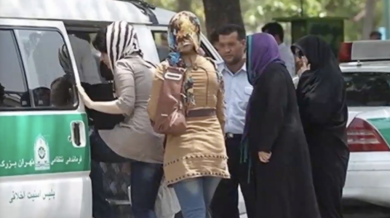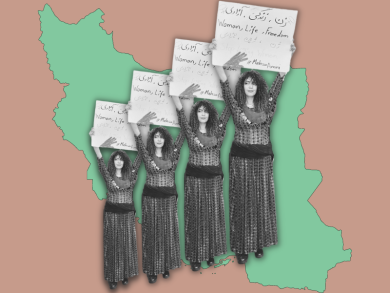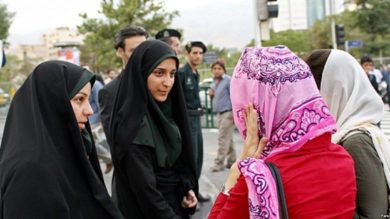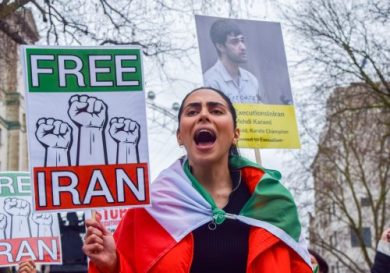Across Iran today, it is the young women — courageous, determined, and visionary — who are redefining resistance against one of the most repressive regimes in the world. From the streets of Tehran to the classrooms of Shiraz, and on digital battlegrounds, young Iranian women are at the forefront of a historic movement demanding freedom, dignity, and equality.
Following the death of Mahsa Amini in 2022, protests erupted across Iran, ignited largely by Generation Z and led powerfully by young women. Their bold defiance against the Islamic Revolutionary Guard Corps (IRGC) and the broader authoritarian system has not only shaken the foundations of the regime but also inspired a global solidarity movement.
This article examines:
• The historical role of youth in Iranian resistance movements.
• Why young women are now the vanguard of the revolution.
• The new tactics and tools they are using to challenge oppression.
• The transformative potential of their leadership for Iran’s future.
1. The Historical Context: Youth and Revolution in Iran
Iran’s history is filled with examples of youth-driven change. In the:
• Constitutional Revolution (1905-1911), students played a critical role in challenging monarchy.
• 1979 Islamic Revolution, university students were pivotal in organizing against the Shah.
• 1999 Student Protests, youth mobilized to demand greater freedoms.
In each wave of resistance, young people provided the energy, innovation, and sacrifice necessary for societal change. Today, however, young women are leading in ways unprecedented in Iranian history.
2. Why Young Women Are Leading the Resistance Now
A. Living Under Double Oppression
Young Iranian women face a double layer of repression:
• State control over political life, and
• Systematic gender discrimination that limits basic rights, including dress, movement, education, and employment.
This daily experience of oppression fuels deep political consciousness and a fierce desire for change among young women.
B. A Generation That Knows Its Rights
Today’s Iranian youth:
• Are digitally connected, witnessing global struggles for rights and democracy.
• Understand international norms around freedom of expression, gender equality, and human dignity.
• Refuse to accept the regime’s narrative that repression is “normal” or “divinely mandated.”
Unlike older generations, young women today demand full freedom without compromise.
C. Cultural Shifts: Beyond Fear
Young Iranian women are:
• Less bound by the fear that paralyzed previous generations.
• Boldly challenging taboos and sacred institutions such as mandatory hijab, morality policing, and even theocratic rule itself.
• Turning private acts of defiance into public political statements.
3. New Tactics of Resistance: The Innovation of Youth
A. Protest in Public and Private Spaces
• Publicly removing hijabs on busy streets.
• Leading sit-ins at universities despite the threat of expulsion and arrest.
• Organizing flash protests in malls, metro stations, and even schools.
Young women are reclaiming public spaces historically denied to them.
B. Digital Resistance
• Using Instagram, Telegram, and Twitter to spread videos, organize protests, and document human rights abuses.
• Developing encrypted communication channels to evade surveillance by the IRGC’s cyber units.
• Creating viral hashtags like #MahsaAmini, #WomenLifeFreedom, and #IranRevolution, pushing Iranian struggles into the global spotlight.
C. Artistic and Symbolic Defiance
• Cutting hair publicly as a symbol of mourning and defiance.
• Painting murals, graffiti, and street art denouncing the regime.
• Turning cultural expressions like dance and music — both restricted for women — into acts of rebellion.
4. Key Figures: Faces of a New Iran
While thousands of unnamed young women are part of the movement, several have become powerful symbols:
• Nika Shakarami (16): Killed during protests, her death galvanized the youth.
• Hadis Najafi (22): Shot during a protest, becoming an icon of bravery.
• Armita Abbasi: Tortured and raped in detention, her story exposed the brutality of IRGC forces.
Their sacrifices have turned them into martyrs and rallying cries for a movement determined to bring freedom.
5. Transforming Iran’s Political Landscape
A. Beyond Reformism
Young Iranian women are not asking for small reforms; they seek:
• A complete transformation of Iran’s political system.
• An end to compulsory hijab, gender apartheid, and theocracy.
• Full democracy with universal human rights protections.
They are moving past the reformist vs. hardliner debate, seeing the entire system as illegitimate.
B. Unity Across Ethnic and Class Lines
Young women from Kurdish, Baluchi, Persian, Arab, and Azeri backgrounds are finding common cause.
• Their movement transcends ethnic, linguistic, and class divides, uniting diverse groups against a shared enemy: systemic oppression.
C. Building a New National Identity
• The movement is shifting Iran’s identity from a theocratic and patriarchal state to a vision of an inclusive, pluralistic, and gender-equal nation.
6. Challenges They Face
Despite their courage, young women face enormous obstacles:
• Mass arrests, forced confessions, and torture at the hands of IRGC forces.
• Targeted killings during protests.
• Digital repression through internet shutdowns and surveillance.
• Social backlash from conservative sectors aligned with the regime.
Yet, their determination only grows stronger with every act of brutality committed by the regime.
7. Global Solidarity and Its Role
A. Amplifying Their Voices
• Sharing their stories on global media platforms.
• Using social media to spread their message internationally.
B. Pressuring Governments
• Pushing for international sanctions on the IRGC and Iranian officials complicit in human rights violations.
• Demanding that Western governments prioritize human rights in their Iran policies.
C. Providing Tools for Digital Freedom
• Supporting VPNs, encryption, and other digital tools to help activists evade regime censorship.
Conclusion: The Future is Theirs
Young Iranian women are not just fighting for their rights — they are shaping the future of an entire nation.
• Their courage, creativity, and vision have already changed the world’s perception of Iran.
• They are building a movement based on freedom, equality, and human dignity — values that will one day define a new Iran.
Join Our Newsletter!
Stay informed with the latest updates, news, and ways to take action in the fight for justice and global security. Sign up now to get updates delivered straight to your inbox!





